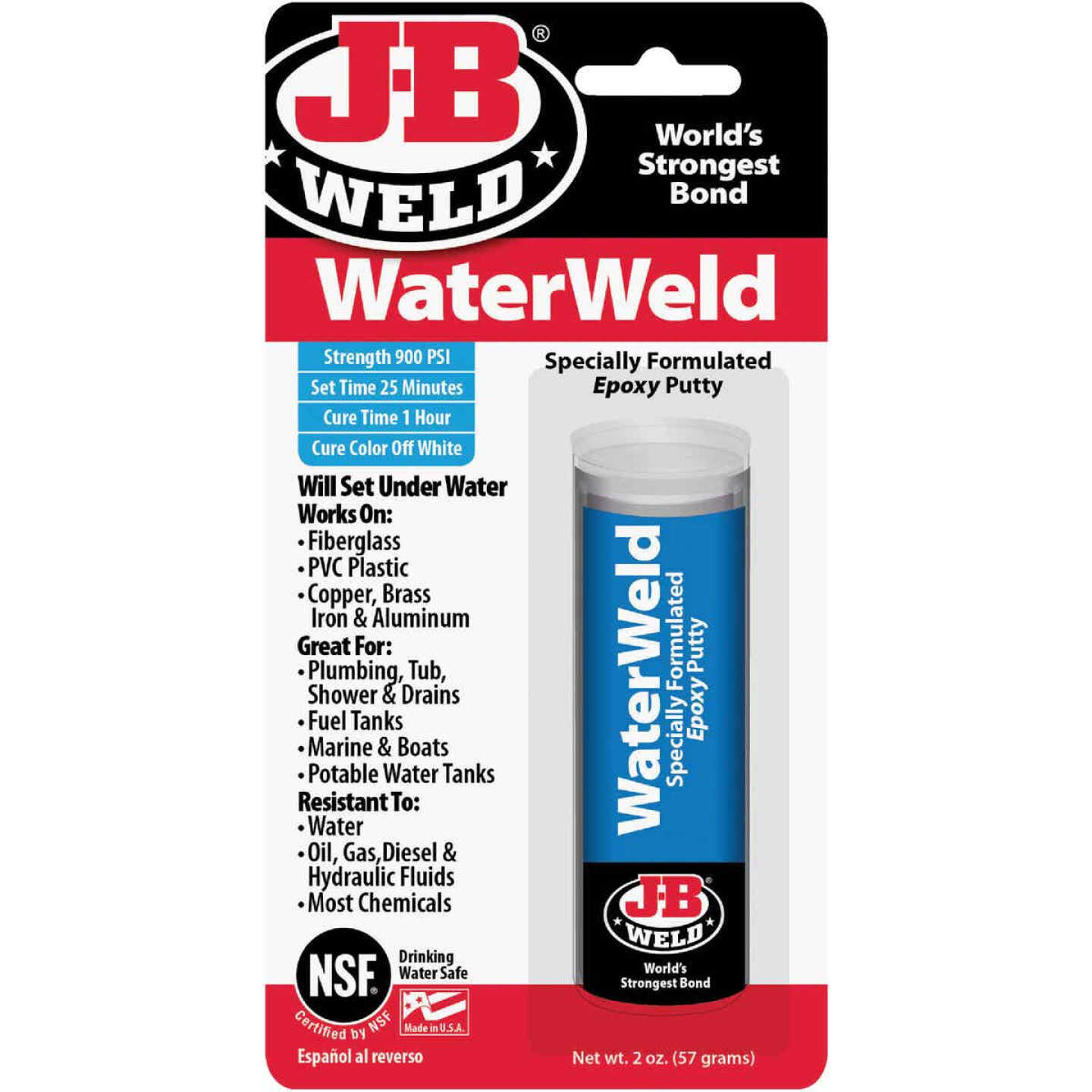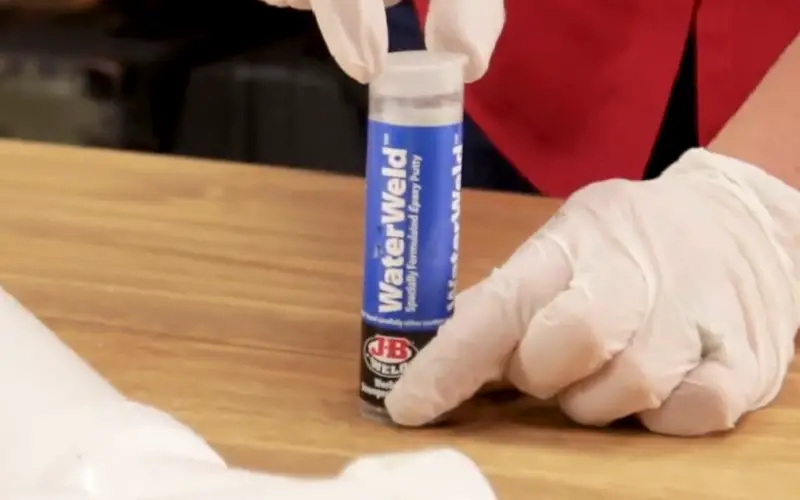Jb Marine Weld and Waterweld are both popular marine adhesives used for underwater repairs. We will compare the two products and highlight their key differences and similarities.
When it comes to underwater repairs, two popular options are Jb Marine Weld and Waterweld. We will compare these two marine adhesives, analyzing their differences and similarities.
Whether you are a professional in need of a reliable adhesive or a DIY enthusiast looking for the best solution for your underwater repairs, this comparison will help you make an informed decision.
We will explore the features, applications, and performance of Jb Marine Weld and Waterweld, providing you with all the information you need to choose the right product. So, let’s dive in and discover which marine adhesive is the best fit for your needs.
Contents
JB Marine Weld Vs Waterweld
Application Process
When it comes to marine repairs, J-B Marine Weld and Waterweld are two popular choices. The proper application process is crucial in achieving a lasting and secure bond when using these products.
Below, we will delve into the essential steps and techniques for the application process of these two marine repair products.
Preparation Steps
- Thoroughly clean the area to be repaired, removing any dirt, grease, or debris.
- Ensure the surface is completely dry before applying the marine weld or waterweld.
- Using sandpaper, roughen the surface to create a better bonding area.
Application Techniques
- With J-B Marine Weld, mix the appropriate amount of the two-part epoxy thoroughly.
- Apply the mixed epoxy evenly to the prepared area using a putty knife or similar tools.
- Allow the J-B Marine Weld to cure according to the product’s instructions.
- When using Waterweld, knead the putty together with your fingers until it is a uniform color.
- Apply the putty firmly to the cleaned and prepared surface, molding it to the desired shape or contour.
- Once in place, smooth and shape the Waterweld using a wet finger, if needed.

Strength And Durability
In the world of marine repairs, strength and durability are crucial factors. When it comes to solutions like JB Marine Weld and Waterweld, understanding their strength and durability can make all the difference in your repair project’s success.
Comparison In Bond Strength
The strength and durability of a marine weld product are determined by its bond strength. JB Marine Weld offers a powerful bond strength, capable of withstanding extreme marine conditions.
Its industrial-strength formula ensures a reliable and long-lasting bond that can endure intense pressures and constant exposure to water.
On the other hand, Waterweld provides a strong bond as well, but it may not match the structural integrity of JB Marine Weld under heavy-duty marine applications.
Resistance To Environmental Factors
Environmental factors pose significant challenges to the strength and durability of marine repairs. JB Marine Weld exhibits exceptional resistance to water, corrosion, and harsh marine environments.
Its resilience against temperature fluctuations makes it an ideal choice for repairs in demanding conditions. In contrast, while Waterweld offers decent resistance to environmental factors, it may not be as resilient as JB Marine Weld in prolonged exposure to extreme marine elements.
Versatility
When it comes to versatility, both JB Marine Weld and Waterweld offer impressive qualities for various applications.
Suitability For Various Materials
JB Marine Weld: Bonds well with metals, wood, plastic, ceramic, tile, and more.
Waterweld: Specially designed for underwater applications, ideal for metal, fiberglass, plastic, and more.
Flexibility In Usage Scenarios
JB Marine Weld: Perfect for marine repairs, automotive, industrial, and household fixes.
Waterweld: Excels in emergency plumbing repairs, pool and spa maintenance, and submerged fixes.
Setting Time And Curing
When undertaking marine repairs or projects, it’s essential to choose the right welding solution. Two popular options for underwater repairs are JB Marine Weld and Waterweld.
In this article, we will compare the setting time and curing properties of these two products to help you make an informed decision.
Time To Harden
One crucial factor to consider when choosing a marine welding product is the time it takes to harden. JB Marine Weld sets within 4-6 hours after application, allowing you to proceed with your project quickly.
On the other hand, Waterweld requires 15-25 minutes to harden, offering the advantage of a shorter waiting time.
Curing Properties
The curing properties of a marine welding product determine its overall strength and durability. JB Marine Weld boasts a robust and reliable curing process.
Once hardened, it forms a strong bond that is resistant to water, chemicals, and extreme temperatures. This makes it an ideal choice for both above-water and underwater applications.
Waterweld, on the other hand, offers a unique curing property. It cures underwater, allowing you to perform repairs without draining or drying the area. This characteristic is especially beneficial for urgent repairs or situations where water cannot be removed.
Additionally, both JB Marine Weld and Waterweld cure to a similar finish, resembling the color and texture of metal. This ensures a seamless and professional-looking repair that blends in seamlessly with the surrounding surface.
Overall, the setting time and curing properties of JB Marine Weld and Waterweld offer different advantages depending on your specific project requirements. Whether you prefer a shorter waiting time or the ability to cure underwater, both products provide reliable and strong bonding for marine applications.
Cost-effectiveness
J-B Marine Weld and Waterweld are both cost-effective solutions for marine repairs. These products offer a budget-friendly option for fixing cracks and leaks in boats, providing durable solutions that withstand water exposure while remaining affordable.
Price Comparison
J-B Marine Weld and Waterweld are both popular options when it comes to marine epoxy solutions. However, one important aspect to consider is the cost-effectiveness of these products. Let’s take a closer look at the price comparison between the two.
At first glance, J-B Marine Weld may seem slightly more expensive than Waterweld. The average cost of a J-B Marine Weld tube is around $10, whereas Waterweld is priced slightly lower at approximately $8.
However, it is essential to consider the value for money each product offers before making a decision.
Value For Money
In terms of value for money, J-B Marine Weld proves to be a more cost-effective option. While it may have a slightly higher price tag, the quality and durability it provides justify the additional investment.
J-B Marine Weld is renowned for its strong bond, excellent adhesion, and resistance to both saltwater and freshwater conditions.
On the other hand, Waterweld, although more affordable, may not offer the same level of reliability and long-lasting performance as J-B Marine Weld.
It is important to weigh the potential costs of frequent repairs and replacements when considering the value for money aspect.
Moreover, J-B Marine Weld often requires less product for a given repair or project. This means that even though the initial cost may be marginally higher, you’ll likely save money in the long run by using less epoxy for each application.
Additionally, J-B Marine Weld comes in various sizes and packaging options, allowing you to choose the most cost-effective quantity for your specific needs.
By considering both the initial cost and long-term value, it becomes clear that J-B Marine Weld is the more cost-effective choice for marine epoxy needs.
User-friendliness
Ease Of Application
JB Marine Weld: Simple to apply, no mixing required, convenient for quick repairs.
Waterweld: Easy application by hand, can be shaped to fit the repair area precisely.
Cleanup Process
JB Marine Weld: Easily cleaned with acetone before hardening.
Waterweld: Can be cleaned with soap and water before it fully sets.
When it’s time to choose between JB Marine Weld and WaterWeld, it ultimately boils down to the specific application and requirements. Both products have their unique attributes and strengths, so let’s break it down further.
Recommendations
For underwater repairs and marine applications, WaterWeld stands out due to its exceptional water resistance and ability to bond well with various materials even when submerged.
On the other hand, for general repairs and metal bonding, JB Marine Weld provides a strong and durable solution.
Considerations For Specific Applications
WaterWeld is best suited for:
- Underwater repairs
- Boat fittings
- Pool and spa components
JB Marine Weld is ideal for:
- Metal bonding
- Repairs on boat exteriors above the waterline
- General marine applications

Frequently Asked Questions For Jb Marine Weld Vs Waterweld
What Is The Difference Between Jb Weld And Jb Marineweld?
JB Weld is suitable for general repairs, while JB MarineWeld is ideal for marine applications. Both offer strong bonds, but MarineWeld is water-resistant and suitable for use on boats.
Does Jb Marine Weld Work Under Water?
Yes, JB Marine Weld works effectively even underwater due to its waterproof nature and strong adhesive properties.
What Is Jb Weld Waterweld Used For?
JB Weld WaterWeld is used for fixing leaks and cracks in plumbing, tanks, and pipes. It bonds to different surfaces, including metal, ceramic, fiberglass, and more.
Does Jb Waterweld Really Work?
Yes, JB WaterWeld is a reliable product that effectively fixes cracks, leaks, and holes in various materials.
Conclusion
Both JB Marine Weld and Waterweld offer strong adhesive properties for marine repairs. Consider your specific project needs when choosing between the two products.
Experiment with small samples to determine the best fit before tackling larger repairs. Make an informed decision for successful outcomes.

